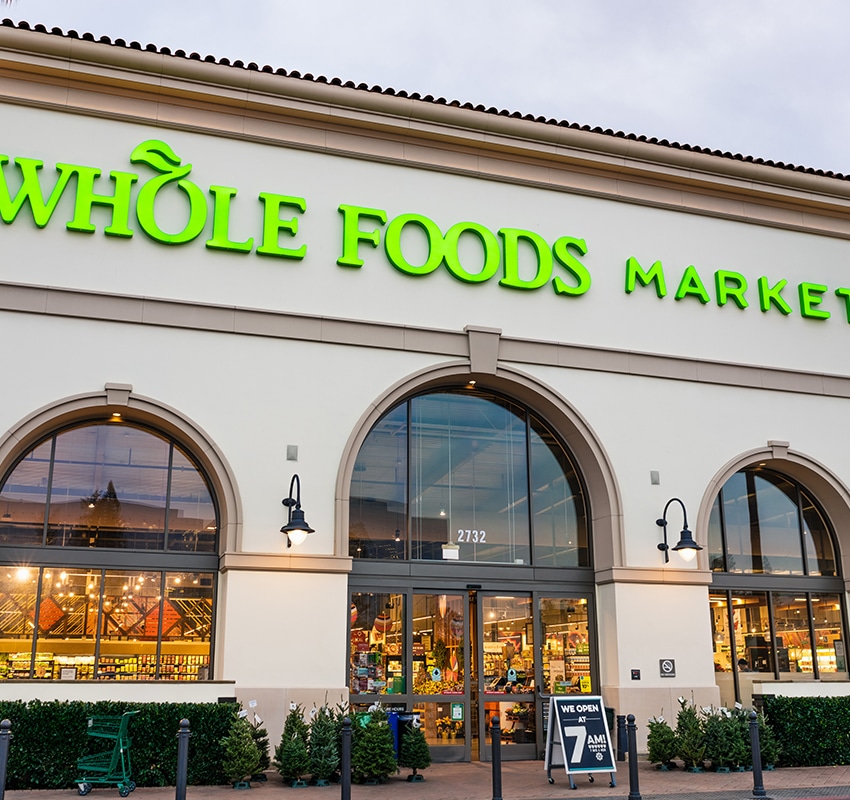Exploring Whole Foods Marketing Strategies
Whole Foods Market, is a place where sustainability and quality coexist and where a healthy diet is a way of life. Learn how this American supermarket company has successfully carved out a position for itself in the competitive realm of organic and natural foods by diving into the interesting investigation of Whole Foods’ marketing tactics.
Key Takeaways
- With the goal of luring in customers who are concerned about their health, Whole Foods Market provides high-quality natural and organic items.
- The business uses an omnichannel retail model that combines physical stores and e-commerce platforms, and it is supported by partnerships, community programs, sustainability initiatives, public relations campaigns, and advertising.
- Whole Foods has reacted to market obstacles by innovating and adopting fresh approaches to acquiring customers in order to maintain its expansion.
Whole Foods’ Product Offerings and Branding
Whole Foods Market is an American supermarket chain that specializes in organic products, setting itself apart from other natural grocery stores with its strong commitment to promoting vitality and well-being of all individuals through providing the highest quality, most wholesome organic and natural foods available. From organic produce to gluten-free options, Whole Foods offers a diverse range of high-quality, health-focused products and brands under the Whole Foods Market brand, catering to various customer needs and preferences.
The marketing mix of Whole Foods, resting on the 4Ps (Product, Price, Place, Promotion), revolves around the provision of organic and natural foods. This focus on quality and nourishment sets Whole Foods apart from other natural grocery stores. It is one of the only food retailers that emphasize these values through their corporate mission and vision statements. Some of the special categories of products offered by Whole Foods include vegetarian options and those catering to dietary restrictions, all under the Engine 2 plant-strong brand.
Alongside a commitment to quality, Whole Foods collaborates with California certified organic farmers and other suppliers to guarantee product sustainability, a factor distinguishing them from other Clarksville natural grocery stores. The Whole Trade label guarantees quality, sustainability, and labor practices for products sourced directly from suppliers, further strengthening Whole Foods Market’s brand and reputation.
Premium Pricing Strategy: Targeting Health-Conscious Customers
The primary target demographic of Whole Foods Market encompasses:
- Health-conscious individuals and families
- Above-average incomes
- Those who lead a healthy lifestyle
- Those with an environmental consciousness
Whole Foods utilizes a premium pricing strategy to cater to this demographic, which is justified by its commitment to quality and sustainability.
The higher cost of Whole Foods’ merchandise compared to competitors’ can be attributed to their premium pricing strategy and their wide selection of suppliers that meet their rigorous standards for food and related products. Despite these higher prices, Whole Foods successfully attracts health-conscious customers who prioritize quality and organic products, even at a higher cost.
Whole Foods’ differentiation strategy is based on:
- High quality standards
- Corporate mission and vision statements that reinforce their competitive edge in the market
- Focus on quality and sustainability
This has allowed Whole Foods to remain the only food retailer leading the organic foods supermarket industry, offering the highest quality natural products.
Distribution Channels: Physical Stores and E-commerce
Adopting a distribution strategy, Whole Foods operates both physical and online stores, offering delivery services to maximize market reach and ensure a seamless customer shopping experience. They use a combination of physical stores and e-commerce platforms, following a bricks-and-clicks or omnichannel retail model, particularly since the company was acquired by Amazon.
Whole Foods applies its intensive growth strategies to both e-commerce and brick-and-mortar operations, with decisions in its operations management based on generic competitive strategies and intensive growth strategies. This approach ensures that Whole Foods can effectively cater to the evolving shopping preferences and industry trends, maintaining a strong presence in the market.
With over 500 locations across the US, Canada, and the UK, Whole Foods Markets can be found in a variety of communities, providing access to their high-quality products and services for a wide range of customers. To locate a store near you or shop online, simply visit the Whole Foods website or use their store locator.
Promotional Activities: Advertising, Public Relations, and Community Programs
To boost brand recognition and foster customer loyalty, Whole Foods engages in various promotional activities including advertising, public relations, and community programs. Although they have typically avoided advertising in print or visual media, they have incorporated digital coupons through their mobile app as part of their promotional approach and initiated their first national ad campaign to connect with customers on a localized level.
The Community Giving program is a public relations initiative that seeks to promote Whole Foods’ brand image through the presentation of the company as a socially responsible business. This program, along with other community initiatives, aligns with Whole Foods Market’s corporate social responsibility strategy and stakeholder management plans, further enhancing its reputation and customer loyalty.
By engaging in various promotional activities and maintaining a strong presence in the community, Whole Foods is able to create awareness about its brand and offerings, fostering a loyal customer base that appreciates its commitment to quality, sustainability, and social responsibility.
Employee Engagement and Healthy Work Culture
As the well-being and satisfaction of employees are vital to their value chain, Whole Foods significantly emphasizes employee engagement and the fostering of a healthy work environment. With a total of 91,000 employees, Whole Foods recognizes the importance of maintaining a positive environment for both staff and customers.
Whole Foods utilizes a multifaceted strategy to promote employee engagement, which includes:
- Engaging with the community through community outreach activities on a monthly basis
- Partnering with strategic vendors
- Leveraging a person-centric approach to data integration
- Creating a welcoming environment for new employees
This strategy has improved customer service, created a more pleasant workplace environment, and increased staff happiness.
By prioritizing employee engagement and promoting a healthy work culture, Whole Foods ensures that their staff remains satisfied and committed to providing the best possible customer experience, ultimately contributing to the continued success of the company.
Sustainability Initiatives and Partnerships with Local and Global Producers
Whole Foods is committed to sustainability initiatives, partnering with local and global producers to offer environmentally friendly products and reinforce local communities. By partnering with local and global producers, Whole Foods is able to offer a wide range of environmentally-friendly products while also supporting the local communities in which they operate.
Whole Foods’ products are designed to be environmentally friendly, helping to reduce waste and pollution and promote sustainable practices. Their commitment to sustainability includes providing access to fresh, healthy, and sustainable products to local communities, further strengthening their reputation as a responsible and environmentally-conscious retailer.
By focusing on sustainability initiatives and collaborating with local and global producers, Whole Foods is able to offer a diverse range of environmentally-friendly products while also supporting local communities, ultimately contributing to the company’s overall success and reputation.
Challenges and Competition: Trader Joe’s, Sprouts Market, and Others
Dealing with challenges and competition from retailers such as Trader Joe’s and Sprouts Market, Whole Foods necessitates persistent innovation and adaptation to uphold its market share. Some of the challenges currently encountered by Whole Foods include:
- Decrease in revenue
- Heightened competition
- Cannibalization
- Absence of an independent online presence
- Requirement to draw in more customers
To address these challenges and competition, Whole Foods has implemented various business strategies, including a strong marketing strategy, such as:
- Introducing new products
- Expanding its online presence
- Offering discounts and promotions
- Investing in technology to improve customer service
These efforts have allowed Whole Foods to continue growing and adapting in the face of a competitive market.
By constantly innovating and exploring new ways to attract and retain customers, Whole Foods is able to maintain its market share and continue its success in the competitive world of organic and natural foods.
Adapting to Industry Conditions: Innovation and New Customer Acquisition
In response to retail industry conditions, Whole Foods continually innovates and seeks fresh tactics to captivate and retain customers, thus securing ongoing growth and success in the competitive market.
Considering industry trends and changes in shopping preferences, Whole Foods formulates its generic competitive strategies and intensive growth strategies to effectively cater to evolving customer needs and preferences. This approach allows Whole Foods to maintain a strong presence in the market and continue to attract new customers.
By continuously adapting to industry conditions and prioritizing innovation and new customer acquisition, Whole Foods ensures its continued growth and success in the competitive world of organic and natural foods.
Summary
By emphasizing quality, sustainability, and customer pleasure, Whole Foods Market has effectively established a place for itself in the market for organic and natural foods. Whole Foods has been able to hold onto its market share and expand despite competition and obstacles thanks to its wide range of product offerings, premium pricing strategy, inventive distribution channels, promotional activities, employee engagement, sustainability initiatives, and constant adaptation to industry conditions. Whole Foods has the potential to continue its success and motivate others to lead better, more sustainable lifestyles by staying true to its basic principles and goals.
Frequently Asked Questions
Gourmet Ads: Revolutionize Your Amazon Strategy
Since 2008, Gourmet Ads has excelled in Digital Advertising for Food, Beverage and Supermarket brands. As a Verified Amazon Ads Partner, we’re here to elevate Amazon Sellers.
Ready to transform your Amazon sales metrics?
Explore Gourmet Ads’ Amazon Advertising Services and discover how our expertise can skyrocket your food brand’s performance on Amazon. We’re dedicated to enhancing your visibility, driving sales efficiency, and ensuring your advertising budget yields maximum profitability.
Dive into the world of optimized Amazon advertising with Gourmet Ads today.












